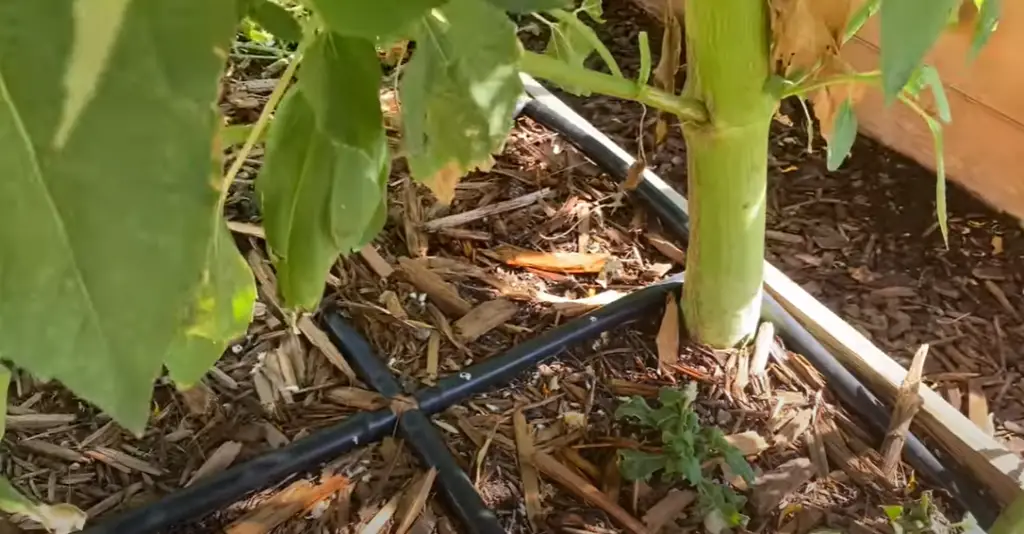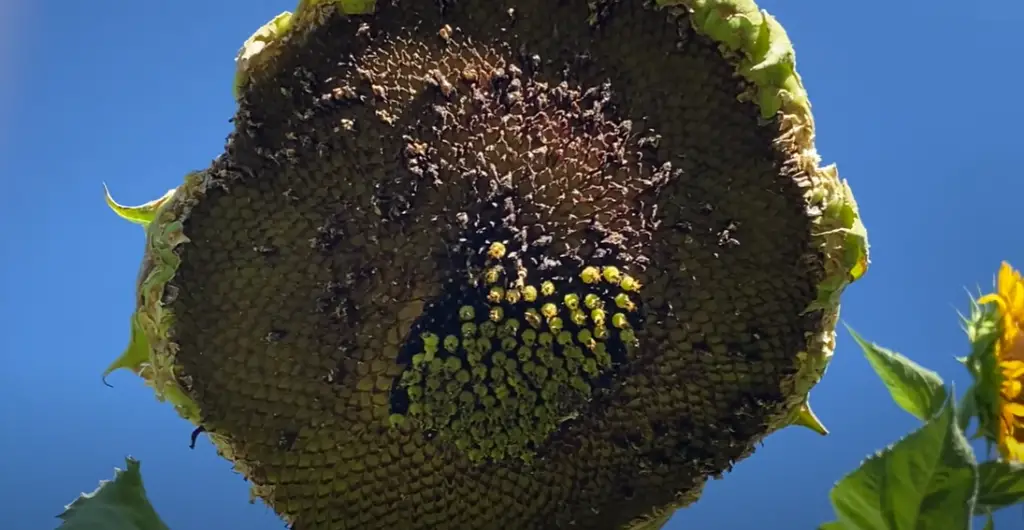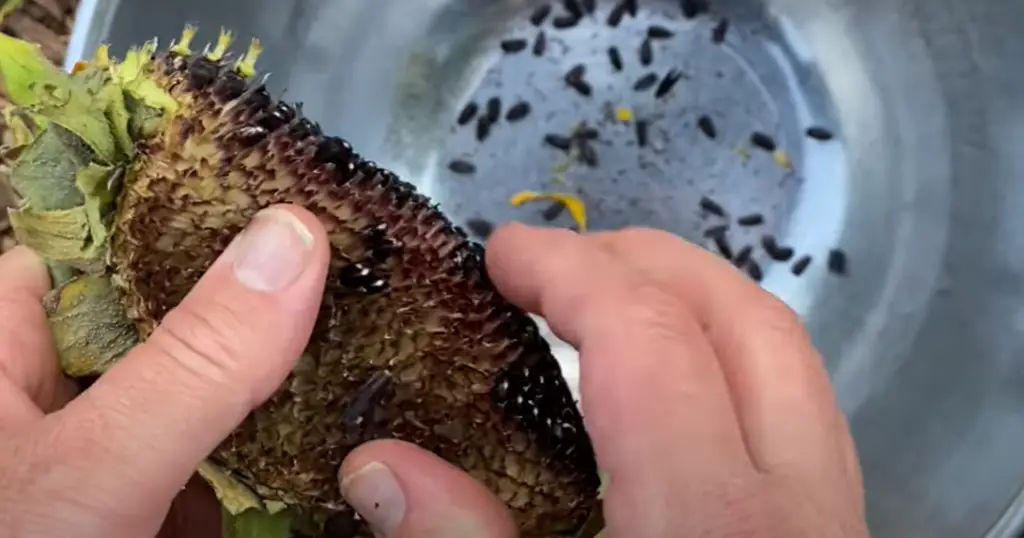If you’re dreaming of a vibrant, summer garden full of beautiful sunflowers, don’t despair if the season’s already started. Despite its reputation for being an early spring bloomer, did you know that planting sunflowers late is actually quite possible? You might not get to enjoy them as long or as brightly as if you planted them in ideal conditions earlier on, but with some careful consideration and planning — it can be done! In this blog post, we’ll cover all the essential tips for successfully planting sunflowers late in the season so that even those who have missed their window can still enjoy a lovely view come summertime.
Why are Sunflowers Popular Plants?
Sunflowers are incredibly popular plants, both inside and outside of gardens. Their bright, cheerful yellow petals make them an eye-catching addition to any outdoor space while also providing a number of practical benefits. Sunflowers are known for their resilient nature, as they are able to withstand a variety of climates and soil types without requiring much maintenance or special care. They are also incredibly easy to grow, flourishing in a range of conditions and requiring minimal effort on your part. [1]
The beauty of sunflowers is unparalleled. Their tall stalks adorned with golden petals can brighten up any outdoor space or garden. Sunflowers bring warmth and cheer to their surroundings, making them the perfect addition to any home or business. The cheerful hue of the flowers also makes them a great choice for cut-flower arrangements, adding a splash of optimism to any space.
Sunflowers have been around for centuries, symbolizing happiness, vitality, and loyalty in many cultures. In Native American culture, they represent strength and longevity due to their ability to withstand harsh conditions. They are also seen as a sign of good luck and hope in some cultures, often used as decorations for special occasions or festivities.
There are many reasons why sunflowers have become a popular plant worldwide. Their beauty, resilience, and nutritional value make them an excellent choice for all types of gardens and outdoor spaces. Whether you’re looking to add a splash of color to your backyard or need a reliable source of nutrition, sunflowers are sure to bring joy and optimism to your home. [2]

Should Sunflowers Be Planted at Home?
Planting sunflowers in your home garden can be a great way to add beauty and cheerfulness to your outdoor space. Sunflowers are known for their bright, sunny yellow petals and the cheerful optimism they bring to any garden. But before you go out and buy a bunch of sunflower seeds, there are a few things you should consider when it comes to planting sunflowers. [3]
Sunflowers require a lot of light and heat, so it’s important to make sure they’re planted in an area that provides plenty of both. While some varieties can tolerate partial shade, most will need full sun in order to thrive. You’ll also want to check your soil’s pH levels; if the pH is too low, the sunflowers won’t be able to absorb nutrients.
It’s also crucial to consider the size of your garden and how much space you can devote to sunflowers. Sunflowers can grow extremely tall – some varieties reach heights of 8 feet! Make sure there is enough room for them to stretch out without crowding other plants.
Watering is also an important factor when it comes to sunflowers. Sunflowers need a lot of water, especially during the flowering period. Make sure your plants are getting plenty of moisture so they can reach their full potential.
You should think about the types of pests and diseases that can affect sunflowers in your area. If the sunflowers aren’t properly protected, they can quickly become overrun by bugs or succumb to fungus and other diseases. Make sure you’re taking proper steps to protect your plants before planting them. [4]
When Should Sunflowers Be Planted?
Sunflowers are a beautiful flower that can add an interesting color to your garden. So when is the best time to plant them? The answer depends on where you live and what type of sunflower you’re planting.
Spring Planting
If you live in a warmer climate, the best time to plant sunflowers is in the spring. The soil should be warm and all danger of frost has passed. You can begin planting as soon as the ground thaws out and you can work it with your hands.

Fall Planting
In colder climates, it’s best to plant sunflowers in the fall. The soil is still warm and you’ll have time for them to grow before winter sets in. Planting in the fall also gives your sunflowers a jump start on blooming when spring arrives.
Other Considerations
When planting, be sure to choose a spot that gets direct sunlight all day long—sunflowers need at least six hours of sunshine for optimal growth. You’ll also want to make sure the soil is well-draining and has plenty of nutrients.
If you live in an area with mild winters, you can even start your sunflower seeds indoors a few weeks before the last frost date. This will give your plants more time to grow and be prepared for the summer sun. [5]
How to Plant Sunflower Seeds?
Sunflower seeds are a great addition to any garden, and by following a few simple steps, you can have beautiful sunflowers in no time. Here’s what you need to know before planting your sunflower seeds:
Choose the Right Variety
When selecting the type of sunflower seed you want to plant, consider where it will be planted and what kind of climate it will have. Different varieties of sunflowers require different climates and soil compositions, so research the variety you plan to plant before doing so.
Plant in Sunny Spots
Sunflowers require at least six hours of direct sunlight each day, so choose a sunny spot in your garden to get the best results. You can also plant sunflowers in large containers if you don’t have an area with direct sunlight.
Make Sure the Soil is Moist
Before planting your sunflower seeds, make sure the soil is moist but not soggy. This will help ensure that your seeds get enough moisture while they are growing.
Plant the Seeds
When you’re ready to plant your sunflower seeds, dig a shallow trench in the soil and space the seeds 1-2 inches apart. Cover them with soil and press down gently to make sure they are covered. Water the area lightly after planting.

Feed Your Sunflowers
Once your sunflowers begin to grow, feed them with a balanced fertilizer every two weeks. This will help your sunflowers reach their full potential and give you beautiful blooms in the end.
Monitor for Pests
As your sunflowers grow, monitor them regularly for pests such as slugs, aphids, and caterpillars. If you find any of these pests, you can use an insecticidal soap to help control them. [6]
Top 10 Sunflower Varieties to Grow
Sunflowers are some of the most beautiful and cheerful flowers that can be grown in any garden. From towering giants to tiny blooms, they come in a variety of sizes and colors. Below we have outlined the top sunflower varieties so you can choose which ones to grow for your garden this year! [7]
- Mammoth Grey Stripe – This variety of sunflower is one of the tallest, growing up to 12 feet high. It produces large yellow petals with dark chocolate centers and has a long bloom season.
- Lemon Queen – This classic yellow variety has small, daisy-like flowers that have bright lemon-yellow petals surrounding deep brown centers. The blooms are four inches wide and can reach up to seven feet tall.
- Teddy Bear – This sunflower variety produces large yellow flowers with dark brown centers that look like teddy bears. Its petals have a fuzzy texture and the plants grow to about five feet in height.
- Red Sun – As its name suggests, this variety of sunflower produces red petals with brown centers. It has a short bloom season and grows to about four feet in height.
- Russian Giant – This variety is the tallest of all sunflowers, growing up to 15 feet tall! The blooms are large yellow flowers with dark brown centers and have long lasting petals.
- Taishan – This variety is a hybrid sunflower that produces black and yellow bicolored petals with deep brown centers. It grows to about seven feet in height and has a long bloom season.
- Vanilla Ice – This variety of sunflower produces creamy white petals with yellow tips and dark chocolate centers. The plants grow to about four feet in height and have a short bloom season.
- Velvet Queen – The petals of this variety are velvety red with dark chocolate centers and the plants grow to about six feet in height. It has a long bloom season and is very attractive to bees and butterflies.
- Autumn Beauty – This sunflower produces large yellow blooms with rust colored centers that turn a deep maroon as they mature. The plants grow to about six feet in height and have a long bloom season.
- Teddy Bear Sunspot – This variety of sunflower produces large yellow blooms with dark chocolate centers that look like teddy bears. It grows to about four feet in height and has a short bloom season. [8]
How to Care for Sunflowers?
Sunflowers are delicate, bright and cheerful flowers that can be used to add a touch of brightness and beauty to any garden. They are also very easy to care for! Here is a guide on how to take care of your Sunflower plants:
Watering
Water your sunflower plants at least once per week, depending on the weather. Make sure that the soil is moist but not soggy – too much water can cause your sunflower plants to become overwatered and develop root rot.

Feeding
Feed your Sunflowers with fertilizer every month during their growth period. Choose a liquid fertilizer with both nitrogen and phosphorus for best results. Avoid using a high-nitrogen fertilizer, as this can encourage leaf growth at the expense of flower production.
Pruning
When your sunflower plants are in their blooming season (usually from June to September), you should regularly prune off any wilted or dead flowers. This will help prevent disease and keep your garden looking neat! Pruning back your sunflowers to about two feet tall is also a good idea, as it will help promote bushier and more compact growth.
Pests
Be on the lookout for common pests such as aphids, slugs and caterpillars. If you find any of these in your garden, use an appropriate pesticide to get rid of them quickly. [9]
What are the Special Features of Harvesting Sunflowers?
Sunflowers are a beautiful and popular flower, often found in many gardens across the world. But did you know that harvesting sunflowers is actually quite simple? Here are some of the special features of this process:
- Sunflower heads can be harvested as soon as the petals start to turn brown and fall off. This usually happens when the back of the flower head stops looking green.
- When harvesting, use a sharp knife to cut just above the stem, leaving some stem and leaves on the plant for future growth. Avoid cutting too close to the base of the flower as this can damage it.
- After harvesting, hang your sunflowers upside down in a cool, dry place for a few weeks so that the seeds can dry out.
- Once the seeds are completely dry, they can be stored in an air-tight container and kept in a cool dark space until you’re ready to use them.
- Sunflower seeds make great snacks and can also be used to make sunflower butter or oil, adding a delicious flavor to your recipes.
- Harvesting sunflowers is also a great way to attract birds and other wildlife into your garden. Planting the right type of sunflower and providing food sources for them will help bring more species into your garden. [10]
Why and How to Fertilize Sunflowers?
Sunflowers are a beautiful and bright addition to any garden. They come in many different colors and sizes, making them an ideal flower for both indoor and outdoor gardens. But to ensure your sunflowers grow strong and healthy, it’s important to fertilize them regularly. Now, we’ll explain why you should fertilize your sunflowers, as well as how to do it properly.
Why Fertilize Sunflowers?
Regular fertilization is important for any flowering plant, and sunflowers are no exception. Fertilizer helps plants to produce more flowers and resist disease and pests. Additionally, sunflowers are heavy feeders which need extra nutrients in order to grow healthy and strong. Without the right type of fertilizer, your sunflowers may not bloom as big and bright as they should.

What Type of Fertilizer Is Best for Sunflowers?
When it comes to fertilizing sunflowers, a balanced fertilizer is best. Look for one with an N-P-K ratio that’s close to 10-10-10, as this will provide the best balance of nutrients for your sunflowers. Alternatively, you can use a slow-release fertilizer with an N-P-K ratio of 6-12-6 or 5-10-5.
How to Fertilize Sunflowers
- Apply fertilizer to the soil at the base of your sunflowers. You can do this every 2-3 months or when you first plant them in order to give them a good start.
- Spread the fertilizer out evenly and rake it into the soil with a garden fork, making sure not to get it too close to the plants’ stems and leaves.
- Water the soil after applying fertilizer to help it soak into the ground.
- You may also want to consider using a foliar spray, which is applied directly onto the leaves and stems of your sunflowers. This can help them get an extra boost of nutrients when needed. [11]
What Diseases Can Sunflowers Get?
Sunflowers are a beautiful and iconic flower, but they can fall victim to diseases just like any other plant. While some of these diseases may be preventable with the right management practices, others can cause significant damage to your sunflower crop if left unchecked. Here we outline 8 of the most common sunflower diseases that gardeners should be aware of.
- Alternaria Leaf Spot: This fungal disease can cause dark spots on the leaves, stems, and heads of sunflowers. To prevent this from occurring, use a fungicide during dry periods and remove affected plants to lessen spread of the disease.
- Bacterial Wilt: Caused by a bacterium that lives in the soil, this disease is often seen as wilting of the foliage and may eventually cause death of the affected plant. Crop rotation and using resistant varieties can help prevent bacterial wilt from occurring.
- Downy Mildew: This fungal disease is identified by yellow spots on leaves which later turn brown or gray. To stop it from spreading, avoid overhead watering and prune the affected leaves.
- Fusarium Wilt: This is another fungal disease that causes wilting of foliage as well as dark discoloration of stems. To prevent this from occurring, use resistant varieties and rotate your crops frequently.
- Powdery Mildew: A white powdery substance on the leaves, stems, and heads of sunflowers is a tell-tale sign of this fungal disease. To prevent this from occurring, avoid overcrowding and reduce humidity in the garden.
- Sclerotinia Head Rot: This disease can cause death of the entire head of the sunflower. To lessen its chances of occurring use resistant varieties and rotate your crops.
- Rust: Identified by orange or yellow-brown spots on the leaves of sunflowers, this fungal disease can cause defoliation if left unchecked. To stop it from spreading, use a fungicide and rotate your crops to prevent re-infection.
- Verticillium Wilt: This fungal disease is caused by a soil-borne fungus that can cause wilting and discoloration of foliage. To prevent this from occurring, use resistant varieties and rotate your crops on a regular basis. [12]

FAQs
What’s the latest you can sow sunflowers?
Sowing sunflowers is best done in early spring when the soil has warmed up. Planting should take place at least a few weeks before the last frost. Depending on your location, this could be anywhere from late April to mid-May.
How long do sunflowers take to grow?
Sunflowers can vary in size and therefore grow at different speeds. Generally, they take about 90 days to reach maturity from seed planting. Sunflowers require a lot of sunlight and water to achieve optimal growth. To encourage sunflower development, it is best to plant in an area with full sun exposure for at least 6-8 hours per day. Additionally, water the soil regularly to ensure adequate hydration. As sunflowers mature, they will require less water due to their deeper root systems.
Sunflower heads can reach up to 12 inches in diameter and weigh several pounds. When harvesting home-grown sunflowers, wait until the flower head has completely dried and turned brown before cutting it off with a sharp knife. This will ensure the entire flower head can be enjoyed, as most of the seeds are contained within it.
Do sunflowers ever stop growing?
No, sunflowers do not stop growing. Sunflowers are an annual plant, meaning they complete their life cycle within one year. During this time, the sunflower will flower and die off at the end of its season. As they grow during this period, they will continually reach taller heights until the petals around the bloom open up and eventually wilt.
Do I need to soak sunflower seeds before planting?
Yes! Soaking sunflower seeds before planting helps soften the seed coat, allowing moisture and oxygen to reach the embryo inside. This process triggers germination and allows for faster emergence and better growth of your sunflowers once planted. To soak sunflower seeds, place them in a bowl or container filled with warm water; cover and let them sit for 8 hours or overnight. After soaking, drain the water and plant the seeds as soon as possible for optimal results!
Useful Video: Q&A — When do you plant sunflower seeds?
Wrapping Up
With the right amount of knowledge and resources, anyone can get a successful sunflower harvest no matter when you decide to start your journey! The best time to plant sunflowers is late spring or early summer, but if you miss that window there are still plenty of ways to get bountiful results. If you’re willing to put in the extra work and research what you need to do differently for late planting, then there’s no reason why planting late won’t be just as successful! So don’t be afraid to take the risks and give starting your sunflower patch a chance because the rewards will be worth it in the end! Planting sunflowers is not only fun and rewarding, but can also generate new perspectives about how beautiful nature is. So make sure to ask questions, talk to experts, and most importantly enjoy the experience learning something new. Now go grab some sunshine…and seeds!
References:
- https://www.gardenfine.com/why-are-sunflowers-so-popular/
- https://nuseed.com/eu/history-of-the-sunflower/
- https://www.marthastewart.com/how-to-grow-and-care-for-sunflowers-7510619
- https://www.gardenersworld.com/how-to/grow-plants/how-to-grow-sunflowers/
- https://www.almanac.com/plant/sunflowers
- https://www.wikihow.com/Plant-Sunflower-Seeds
- https://www.thespruce.com/sunflower-varieties-4141732
- https://www.allaboutgardening.com/sunflower-varieties/
- https://www.thespruce.com/growing-sunflowers-1402916
- https://sunfloromash.com/en/news/zbiranna-sonasnika-proces-metodi-ta-tehnika
- https://plantaddicts.com/fertilizing-sunflowers/
- https://www.ndsu.edu/agriculture/ag-hub/publications/sunflower-disease-diagnostic-series










Leave a Reply
View Comments